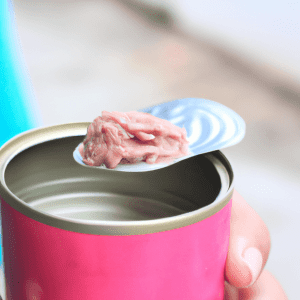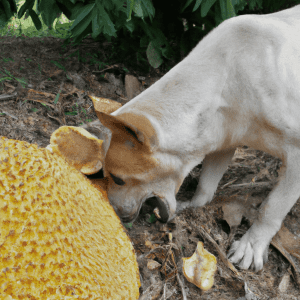Mexican rice is a popular and tasty side dish, but can dogs eat it? The answer is yes and no. While it is generally safe for dogs to consume Mexican rice, it should be done in moderation due to the potential for high levels of sodium and fats. Mexican rice is generally made with white or brown rice, tomatoes, garlic, onion, and spices.
While the ingredients themselves are not toxic to dogs, the combination may not be the healthiest for them. In addition, Mexican rice often contains additional ingredients such as cheese, sour cream, and cilantro, which should be avoided altogether.
The Health Benefits of Feeding Your Dog Mexican Rice
If you’re looking for a delicious and nutritious meal to add to your pup’s diet, Mexican rice might be the perfect option. Not only is it tasty and easy to prepare, but it can also provide some great health benefits for your beloved pooch. Here’s a quick look at why you should consider adding Mexican rice to your pup’s menu. First and foremost, Mexican rice is a great source of essential nutrients. It’s rich in carbohydrates, protein, and fiber, all of which are essential for keeping your pup healthy and energized throughout the day.
The fiber content can also help to promote regular digestion, which is important for keeping your pup’s digestive system running smoothly. Mexican rice is also packed with vitamins and minerals that are beneficial for your pup’s health. It’s a great source of calcium, zinc, and iron, as well as vitamins B6 and E. These nutrients can help to boost your pup’s immune system, support healthy bones and teeth, and even aid in the production of red blood cells.
Finally, Mexican rice is a great low-calorie food option for your pup. It’s high in fiber and low in fat, which makes it a great choice for pups who may be prone to weight gain. It’s also easy to digest and can help to keep your pup feeling fuller for longer. All in all, Mexican rice is an excellent food option for your pup. Not only is it delicious and easy to make, but it can also provide some great health benefits. So why not give it a try and see what your pup thinks?
What to Look for When Buying Mexican Rice for Your Dog
When buying Mexican rice for your dog, there are a few important things to consider. First, check the ingredients list and make sure it doesn’t contain anything that could be harmful to your pup. Avoid any rice mixes that contain spices, onions, garlic, or other ingredients that could be irritating to your pup’s digestive system. Make sure it doesn’t contain any artificial flavors, added sugar, or preservatives. Second, look for rice that is organic and free of any pesticides or other chemicals.
This will help ensure that your pup is getting the healthiest option and will help you avoid any potential allergies or digestive issues. Third, buy from a reputable brand. Look for one that has a history of producing good quality, safe foods for your pup. It’s also a good idea to read customer reviews and see what other pet owners are saying about the product. Finally, check the packaging. Make sure it is sealed properly and has not been tampered with in any way.
This will help ensure that your pup is getting the freshest, safest food possible. By taking these steps, you can be sure that you’re getting the best Mexican rice for your pup. With the right mix, your pup will be able to enjoy a tasty and nutritious meal that is both delicious and healthy!
Is Mexican Rice Safe to Feed Your Dog?
Yes, Mexican rice is safe to feed your dog, as long as it’s plain and doesn’t contain any added ingredients like salt, spices, onion, garlic, or other seasonings. Mexican rice is typically made with white or brown rice, tomato sauce, and broth, which are all ingredients that are safe for dogs to eat. When feeding your dog Mexican rice, it’s important to make sure that it’s cooked all the way through, as undercooked rice can be dangerous. If you’re making it yourself, it’s best to use low-sodium broth and skip the salt and other seasonings.
Mexican rice can be a great addition to your dog’s diet as it is a good source of carbohydrates and provides calories and energy. However, it should not replace your pup’s regular meals, as it may not contain all the nutrients your pup needs. If you’re buying pre-made Mexican rice, be sure to check the ingredients list for anything that might be dangerous for your pup. If you’re concerned about your pup’s diet, it’s always best to consult with your veterinarian.
Tips for Preparing Mexican Rice Safely for Your Dog
- Start by using brown or white rice. Avoid processed and instant rice, as these can contain unhealthy additives.
- Cook the rice in beef or chicken broth, instead of plain water, for additional flavor and nutrition.
- Before adding any additional ingredients to the cooked rice, make sure they are all safe for your dog. Avoid adding ingredients that are high in sodium, sugar, and fat, such as cheese, sour cream, and processed meats.
- To add flavor, you can sauté onions, garlic, and peppers in a small amount of olive oil before adding them to the cooked rice.
- If you want to add a little bit of heat to the Mexican rice, consider adding a small amount of cayenne pepper, chili powder, or smoked paprika.
- Once your Mexican rice is cooked, let it cool completely before serving to your dog.
How Much Mexican Rice Is Too Much for Your Dog?
It’s best to use the “less is more” mentality when it comes to feeding your dog Mexican rice. While Mexican rice may seem harmless enough, it can actually be too high in sodium, fat, and carbohydrates for your pup. Too much of any of these can cause serious health problems, so it’s best to be mindful when it comes to how much Mexican rice you give your dog. If you do decide to give your pup Mexican rice, it’s best to only give it in small amounts and as an occasional treat.
As with all treats, it should never make up more than 10% of your dog’s total daily caloric intake. A good rule of thumb is to only give your pup a tablespoon or two of Mexican rice at a time. It’s also a good idea to check the ingredients list before giving Mexican rice to your pup.
Some brands of Mexican rice may contain ingredients that are toxic to dogs, such as onions and garlic, so it’s important to make sure you know what you’re giving your pup. In short, when it comes to Mexican rice, less is definitely more. Make sure you only give your pup a small amount and check the ingredients list before feeding it to them. That way, you can ensure that you’re giving your pup a safe and healthy treat.
The Pros and Cons of Feeding Your Dog Mexican Rice
Feeding your dog Mexican rice can be a great way to give your furry friend a tasty and nutritious meal. However, there are some important considerations to keep in mind before feeding your pup this dish. Here are the pros and cons of feeding your dog Mexican rice: Pros:
- Mexican rice is a great source of complex carbohydrates, which can provide your dog with the necessary energy to stay active throughout the day.
- It also contains a variety of vitamins and minerals, such as folate and iron, which can help keep your dog healthy.
- The dish is usually made with healthy ingredients, such as tomatoes, onions, and peppers, which can provide your pup with important antioxidants and other beneficial compounds. Cons:
- Mexican rice is usually high in sodium, which can be a problem for dogs with certain health conditions.
- It also usually contains ingredients like cheese and sour cream, which can be high in fat and calories and may not be the best for your pup’s waistline.
- The dish can also contain spices, such as cumin and chili powder, which can be too spicy for some dogs. Overall, feeding your dog Mexican rice can be a great way to give them a nutritiously balanced meal. However, it’s important to keep in mind the potential drawbacks and consult with your veterinarian to ensure that the dish is safe for your specific pup.
How to Tell if Your Dog Is Allergic to Mexican Rice
If your pup is displaying any of the following symptoms after eating Mexican rice, it’s possible he or she may be allergic: – Vomiting – Diarrhea – Swelling of the face or other body parts – Hives or other skin irritations – Itching – Sneezing – Wheezing – Coughing – Runny nose If your pup is experiencing any of these symptoms, it’s best to take him or her to the vet to get an accurate diagnosis. The vet can recommend a diet change or an allergy medication, if necessary.
Nutritional Value of Mexican Rice for Dogs
Mexican rice can be a great treat for your pup, as it contains a variety of nutritional benefits! Rice is a great source of carbohydrates, which can provide your pup with energy. Rice also contains some essential vitamins and minerals, including magnesium, phosphorus, and B vitamins. In addition, Mexican rice is often made with chicken, beans, and vegetables, which are all great sources of protein and other important nutrients. For example, beans are a great source of fiber and can help promote healthy digestion.
Vegetables are packed with vitamins and minerals, like vitamin A and potassium. Plus, the chicken in Mexican rice is a great source of lean protein that can help keep your pup’s muscle mass up. Overall, Mexican rice can be a great addition to your pup’s diet. Just make sure to ask your vet about any specific dietary recommendations for your pup before giving them Mexican rice.
What Are the Alternatives to Feeding Your Dog Mexican Rice?
If you’re looking for alternatives to feeding your dog Mexican rice, there are plenty of options that are both tasty and nutritious for your four-legged friend. First, you can make your own homemade dog food. Many of the ingredients in Mexican rice can be used to make a balanced meal for your pup. For example, you can mix cooked white or brown rice with cooked lean meats, such as chicken or turkey, and vegetables, such as carrots and green beans.
This can be a great option for dogs with special dietary needs as you can tailor the ingredients to meet their individual needs. Another option is to purchase commercial dog food. Many brands offer a variety of flavors and varieties that include the same types of ingredients that are found in Mexican rice. Look for a brand that is formulated for your pup’s age, size, and activity level. You can also supplement your pup’s meals with fresh fruits and vegetables.
Many dogs love the taste of raw carrots, apples, and other fruits and veggies. Just make sure to remove any stems, seeds, or pits before feeding them to your pup. Finally, you can add a few extra ingredients to your pup’s meals to boost the flavor and nutrition. For example, adding a few tablespoons of cottage cheese or a spoonful of natural peanut butter can add some extra flavor and nutrition. No matter which option you choose, make sure to consult with your veterinarian before making any changes to your pup’s diet.
1How to Introduce Mexican Rice to Your Dog’s Diet
Introducing Mexican rice to your dog’s diet can be a great way to switch up their meals and give them something new and exciting to try. But, as with any new food, it’s important to do so carefully to make sure your pup doesn’t have any adverse reactions. Here are some tips for introducing Mexican rice to your pup’s diet:
- Start off slowly by adding a small amount of Mexican rice to your pup’s regular food. This will allow them to get used to the flavor and texture without overwhelming them.
- Make sure the Mexican rice is cooked properly and has no added spices or seasonings that could be toxic to your pup.
- Monitor your pup closely after introducing Mexican rice. Look for signs of an upset stomach or allergies, such as vomiting, diarrhea, or itching.
- If possible, try to feed your pup Mexican rice at the same time every day. This will help them get used to the new food and will make it easier for you to monitor their reactions. By introducing Mexican rice to your pup’s diet gradually and carefully, you can safely add a new flavor to their meals without any risks. Have fun and enjoy the new taste with your pup!
In conclusion, it is generally not recommended for dogs to eat Mexican rice. While some dogs may be able to digest it without any problems, Mexican rice often contains ingredients like onions and garlic that can be toxic to dogs. Additionally, Mexican rice is usually heavily seasoned and can be high in sodium and fat, both of which can be dangerous for dogs. Therefore, it is best to avoid feeding your dog Mexican rice.




